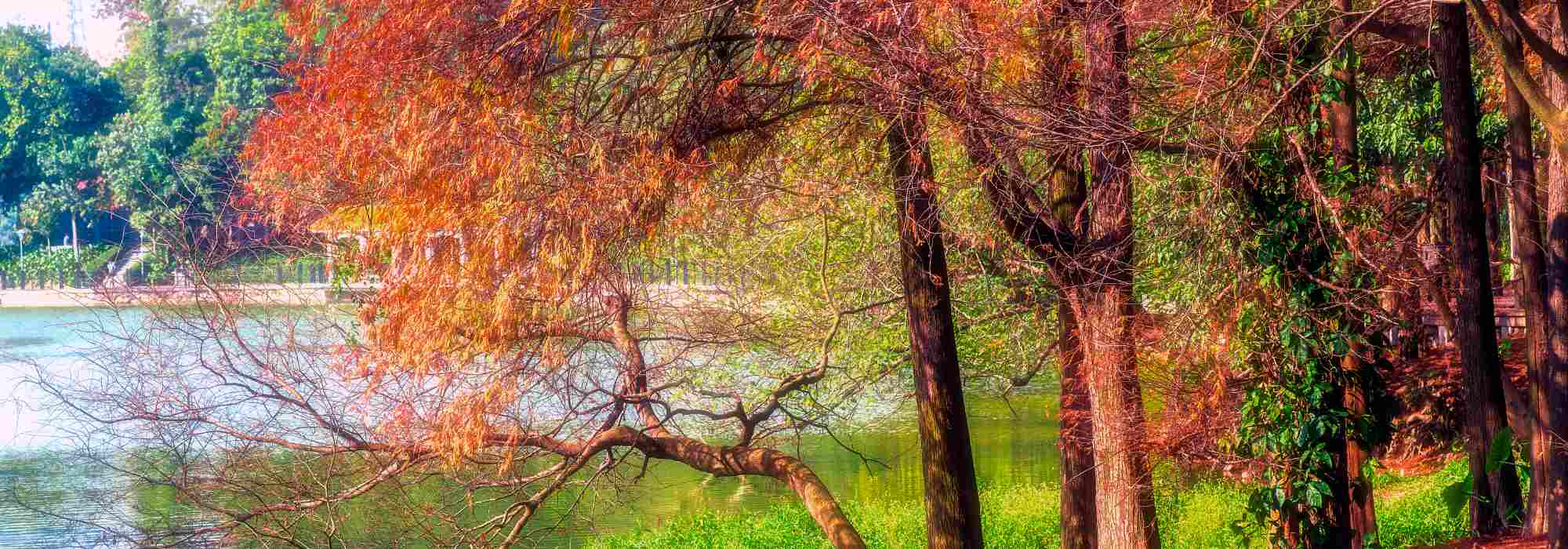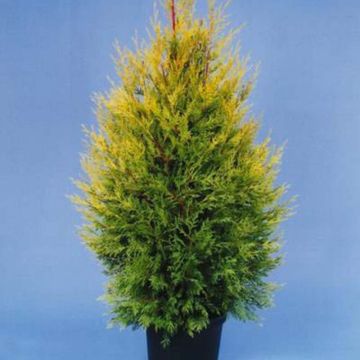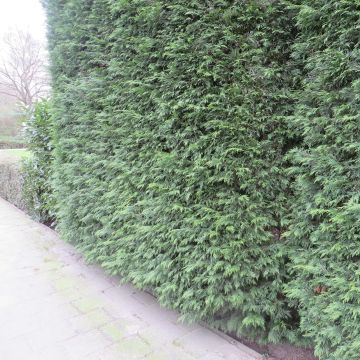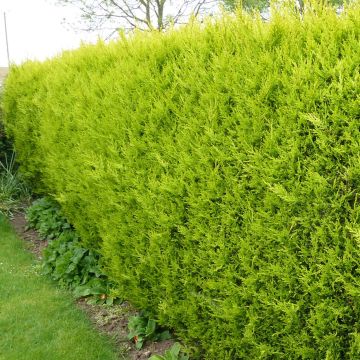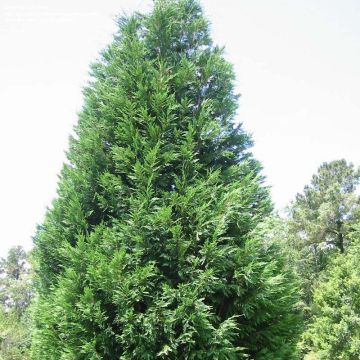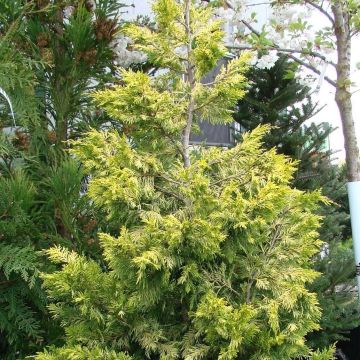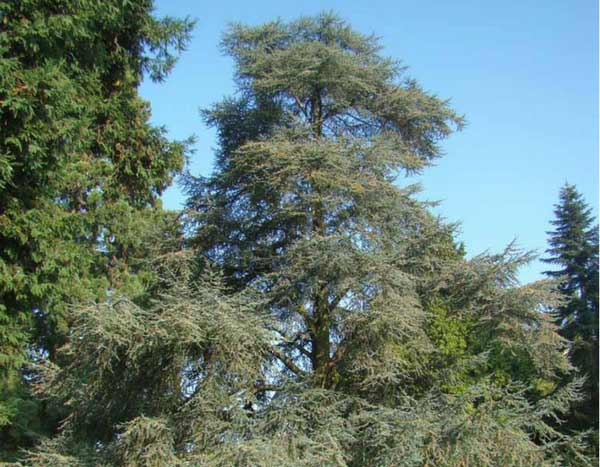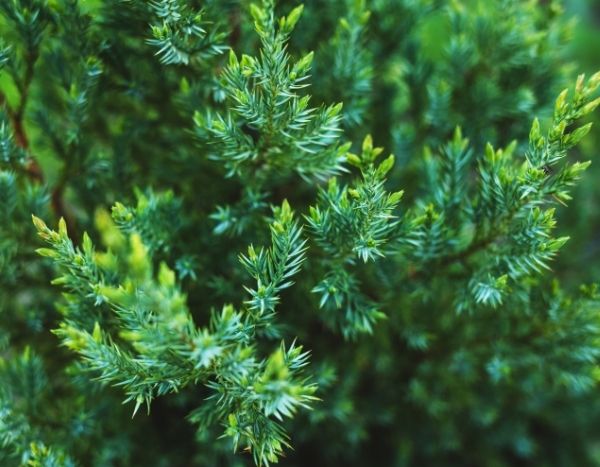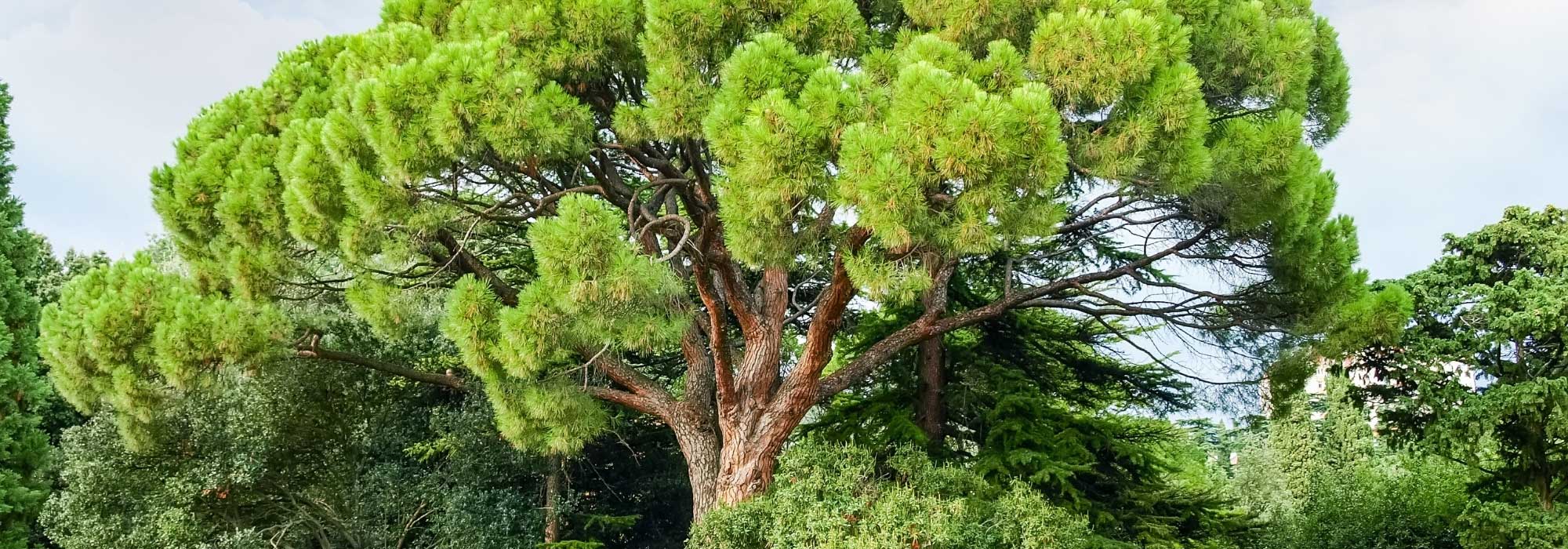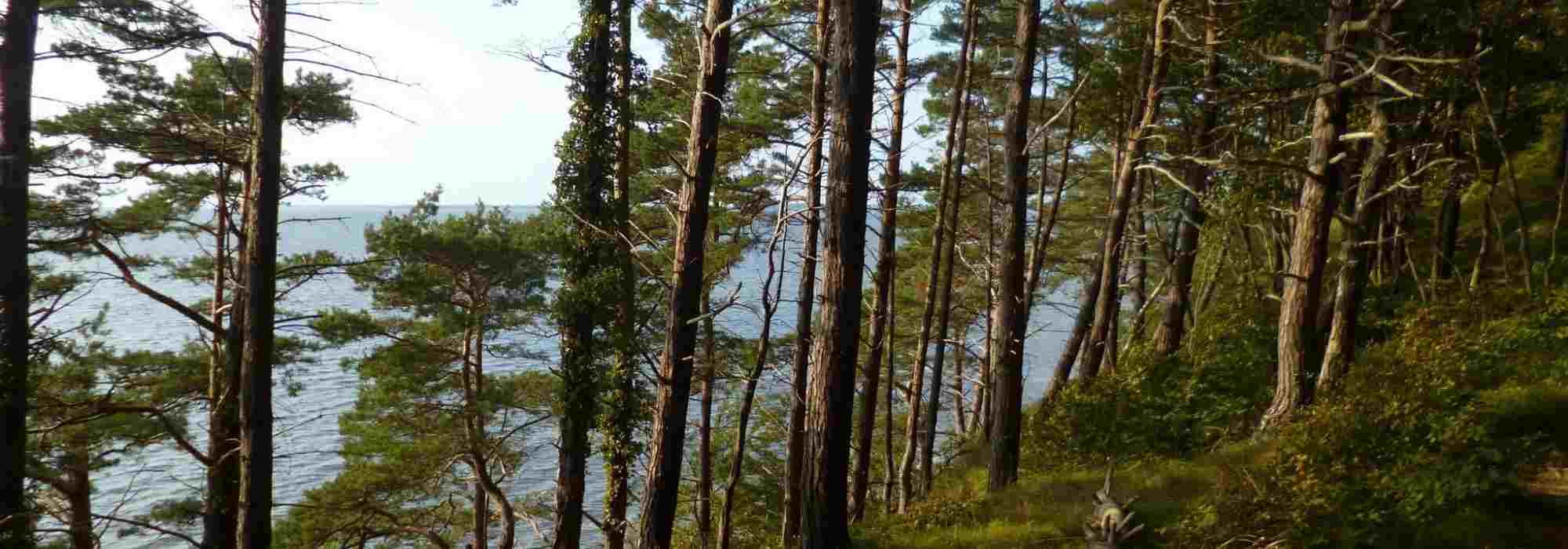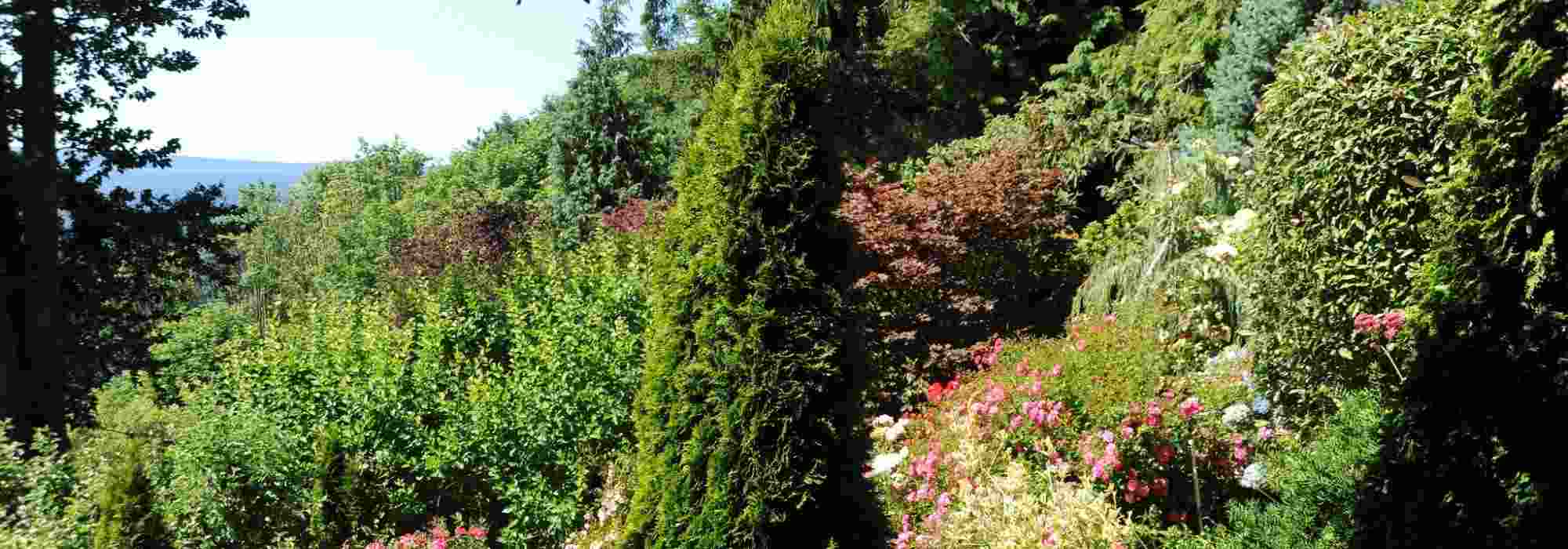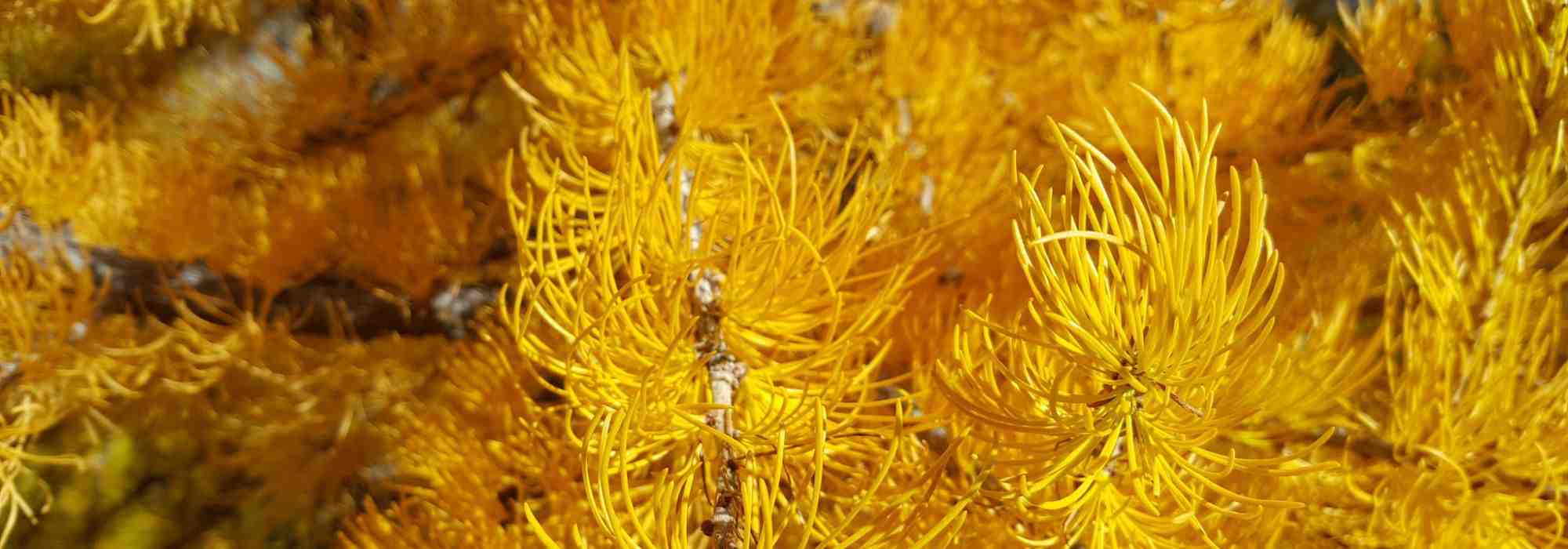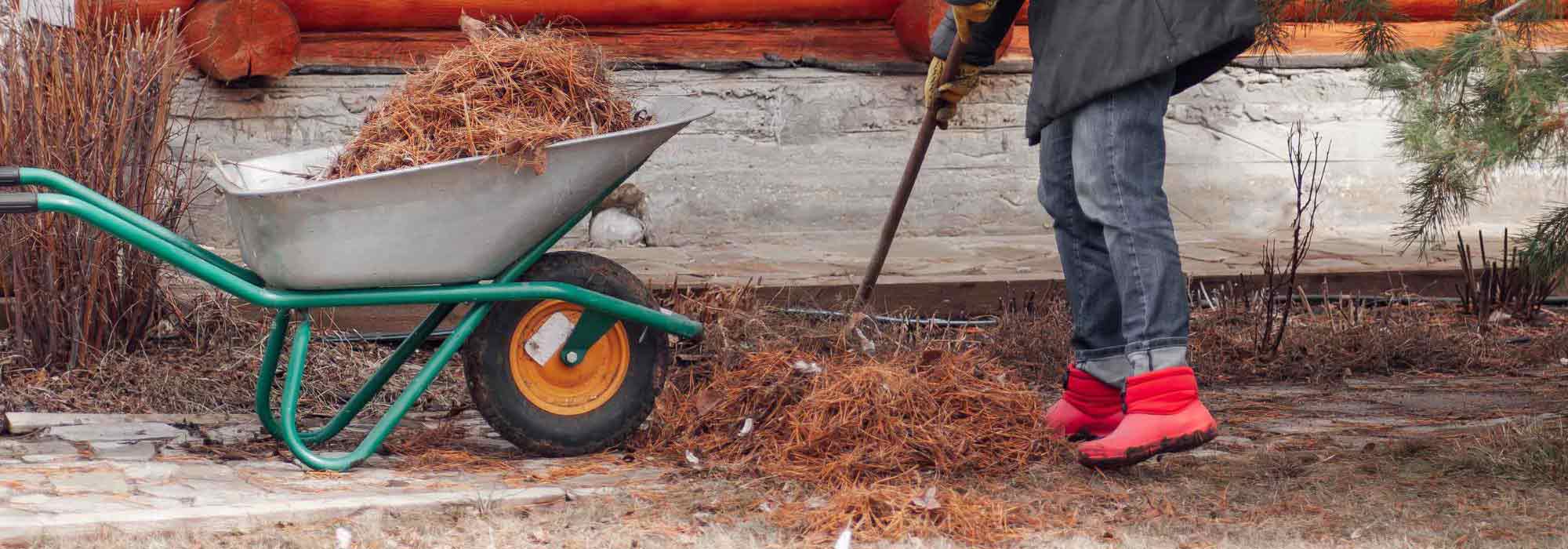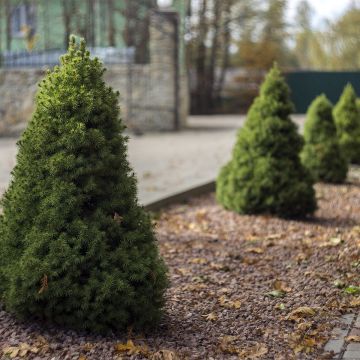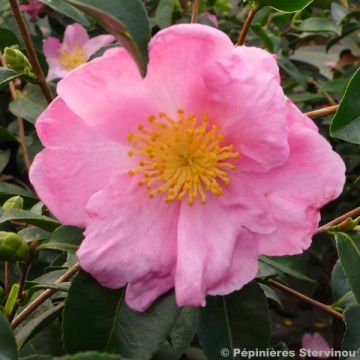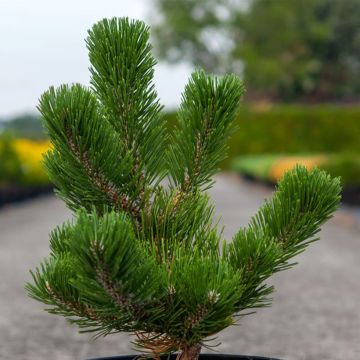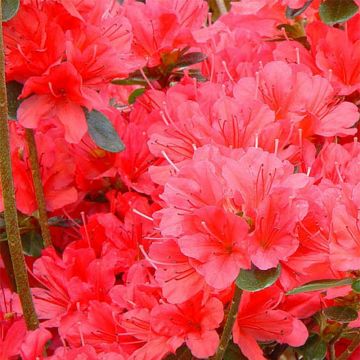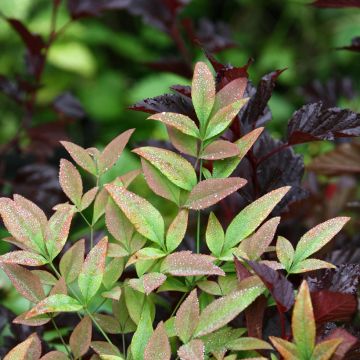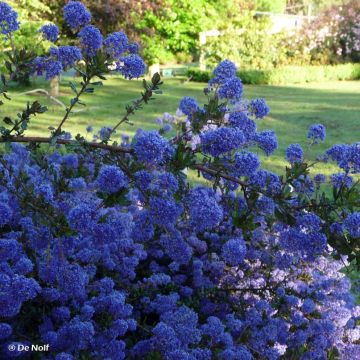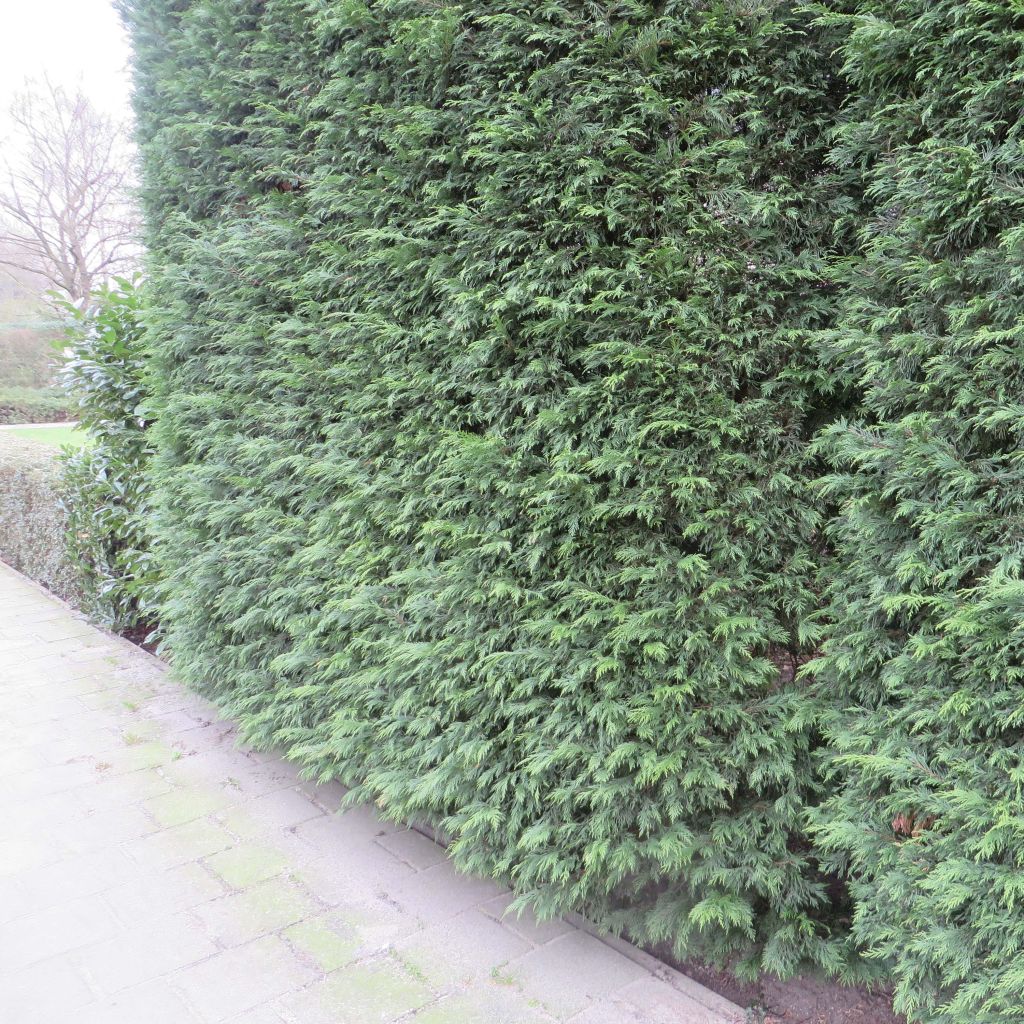

Leyland cypress - Cupressocyparis leylandii
Leyland cypress - Cupressocyparis leylandii
(x) Cupressocyparis leylandii
Leyland cypress
Good planting in good condition upon arrival and efficient delivery.
robert, 02/09/2021
Special offer!
Receive a €20 voucher for any order over €90 (excluding delivery costs, credit notes, and plastic-free options)!
1- Add your favorite plants to your cart.
2- Once you have reached €90, confirm your order (you can even choose the delivery date!).
3- As soon as your order is shipped, you will receive an email containing your voucher code, valid for 3 months (90 days).
Your voucher is unique and can only be used once, for any order with a minimum value of €20, excluding delivery costs.
Can be combined with other current offers, non-divisible and non-refundable.
Home or relay delivery (depending on size and destination)
Schedule delivery date,
and select date in basket
This plant carries a 24 months recovery warranty
More information
We guarantee the quality of our plants for a full growing cycle, and will replace at our expense any plant that fails to recover under normal climatic and planting conditions.
Does this plant fit my garden?
Set up your Plantfit profile →
Description
The Cupressocyparis leylandii, better known as the Leyland Cypress or simply 'Leylandii', is a majestic, undemanding, and fast-growing conifer, often used as an evergreen hedge. This robust cypress adapts well to most climates, including those in coastal areas. However, rocky soils and very dry Mediterranean climates should be avoided. Depending on your budget, hedge length, patience, and gardening time, different types of products are available to you.
- For an economical Leyland cypress hedge, opt for 9 cm (3.5'')pots that can be planted all year round. The soil should be carefully prepared (thorough weeding, removal of all roots, planting trench), and it is advisable to place a sheet at the base of the shrubs to limit the germination of weed seeds and amount of weeding while they establish themselves. Once established, they grow rapidly and will quickly catch up with their container-grown counterparts. This is the most cost-effective solution for a hedge of at least 10 m (32.8 ft) in length.
- For a fast-growing Leyland cypress hedge or to fill in an existing hedge, choose bushes in 3, 4, or even 7.5 litre pots. Plants in pots can be planted all year round, except during frosty periods or heatwaves. They are planted in individual planting holes, like any other garden shrub. While they have an immediate impact, they take a little longer to 'get going' and will require more frequent and regular watering, especially during dry summers.
Respect the proper planting distance based on the size of your plant! Generally, it is recommended to leave a space of 60 cm (23.6'') between each plant for pot-grown shrubs, 70 to 80 cm (2.3 ft to 2.6 ft) for plants in 2 or 3-litre pots, 80 cm to 1 m (2.6 ft to 3.3 ft) for pots from 4 to 10 litres, and 1 m to 1.2 m (3.3 ft to 3.9 ft) for pots larger than 10 litres. For Leyland cypress, given its rapid growth and mature size, it is preferable to space each pot-grown plant 1 m (3.3 ft) apart, up to 2 m (6.6 ft) for shrubs grown in large pots.
The (x) Cupressocyparis leylandii is a hybrid between the Cupressus macrocarpa, the Lambert or Monterey cypress, native to the forests along the central California coast, and the Chamaecyparis nootkatensis, the Nootka false cypress, native to the northern part of the western coast of North America. These two hardy, large-growing conifers, tolerant of many soil conditions, prefer rather humid climates. Both belong to the Cupressaceae family. The 'Leylandii' can tolerate fairly poor, chalky, clayey soils, pollution, salt spray, and fog.
After becoming established growth is rapid. The Leyland cypress grows about 80 cm to 1 m (2.6 ft to 3.3 ft) per year, reaching an average height of 20 m (65.6 ft) with a width of 6 to 7 m (19.7 ft to 23 ft) if left unpruned. Regular pruning (twice a year) will be necessary if you want to maintain it at a height of 2 to 3 m (6.6 ft to 9.8 ft) in a conventional hedge. This conifer has a naturally regular, pyramidal, and dense habit. Its flexible and slightly upright branches are adorned with coarse foliage when observed up close, emitting an aromatic scent when crushed. Its smell is slightly acidic. Its small, blunt overlapping triangular leaves are carried on short cylindrical branchlets, which in turn are borne on branches. Their colour is a deep green.
This conifer produces pollen that can cause allergies for some people in early spring. The female cones are rounded and green, turning brown when mature. The reddish-brown bark becomes greyish with age. The tree has a taproot system, allowing it to anchor deeply in the soil to retrieve water and nutrients, and resist even strong winds. It is very hardy, around -15/-20°C.
The Leyland Cypress is perfect for large hedges (preferably not between properties). Best left unpruned, they will protect the garden, whether on the edge of the countryside or by the sea, among other places. In this context, there is no need for regular pruning in April and September. It is a great asset for urban or very windy coastal gardens and is widely planted in housing estates, providing a year-round permanent feature while functioning as a privacy screen. When planted as a specimen tree in a large garden, it is magnificent. Like many conifers, it blends well in gardens of all styles, whether contemporary, wild, romantic, or English. However, it is a bit of a shame to confine this magnificent tree to a purely utilitarian role: in a large garden, it makes for a beautiful free- standing specimen.
Leyland cypress - Cupressocyparis leylandii in pictures
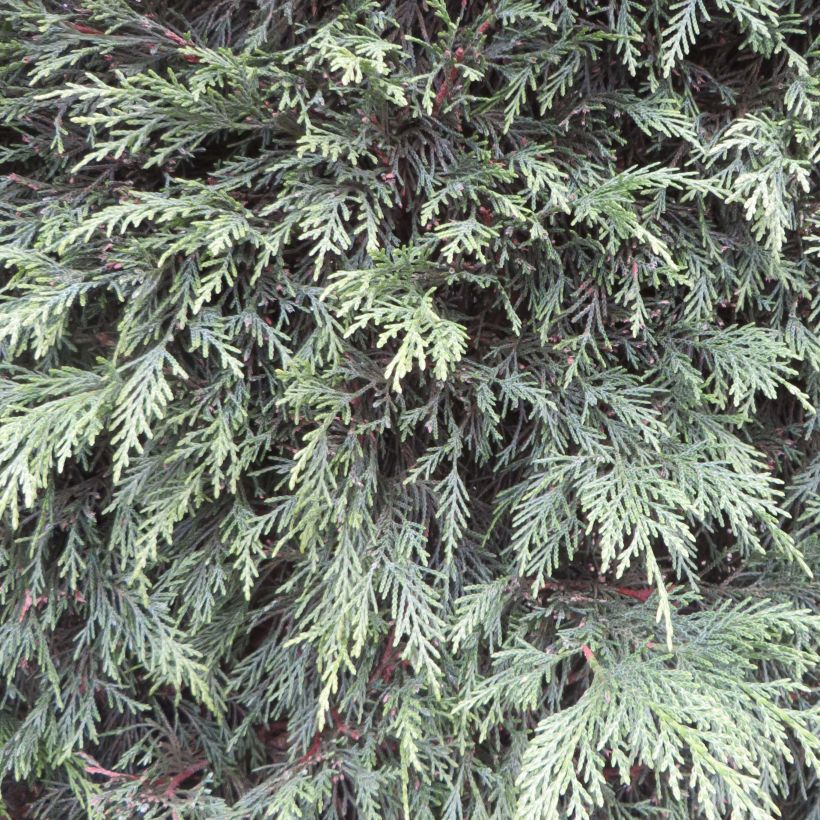

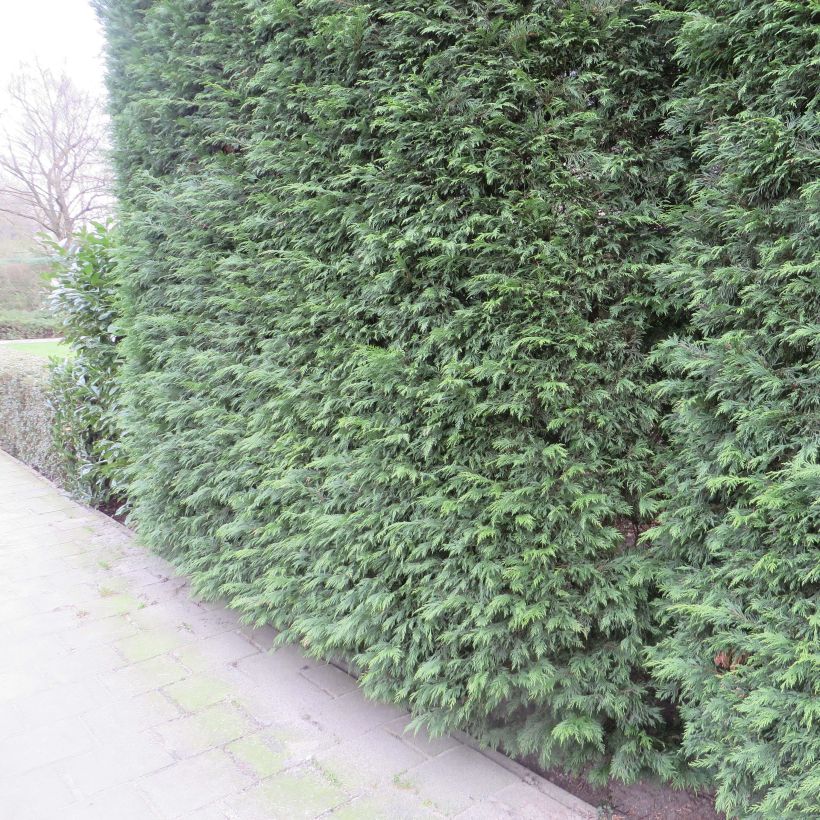

Plant habit
Flowering
Foliage
Botanical data
(x) Cupressocyparis
leylandii
Cupressaceae
Leyland cypress
Cultivar or hybrid
Other Cupressocyparis
View all →Planting and care
The Leyland Cypress should be planted in a sunny position in any ordinary garden soil that is deep and well-prepared, as its taproot will need to go deep into the ground to find water and provide a good anchor for its substantial height. Choose its location carefully, as the large taproot does not like being disturbed or broken. It does not need to be staked at planting though, if it is very exposed to the wind, it is better to support it until it becomes established. This conifer tolerates any soil that remains moist, it does not like long hot and dry periods in the summer. Space the plants 2 m (6.6 ft) apart for hedge planting.
Free-standing specimen trees naturally develop a beautiful shape, which should not be disturbed by pruning. On the other hand, those used in hedges can be pruned regularly, with care, and applying pruning sealer to the most significant wounds.
This conifer can be subject to canker (a pathogenic fungus), especially if it is repeatedly pruned or damaged. Its most common parasites are red spider mites, aphids, scale insects, bark beetles, and jewel beetles, which are virulent in hot and dry weather; it is advisable to spray the foliage with water in these conditions to prevent mite investations.
Planting period
Intended location
Care
Planting & care advice
-
, onOrder confirmed
Reply from on Promesse de fleurs
Similar products
Haven't found what you were looking for?
Hardiness is the lowest winter temperature a plant can endure without suffering serious damage or even dying. However, hardiness is affected by location (a sheltered area, such as a patio), protection (winter cover) and soil type (hardiness is improved by well-drained soil).

Photo Sharing Terms & Conditions
In order to encourage gardeners to interact and share their experiences, Promesse de fleurs offers various media enabling content to be uploaded onto its Site - in particular via the ‘Photo sharing’ module.
The User agrees to refrain from:
- Posting any content that is illegal, prejudicial, insulting, racist, inciteful to hatred, revisionist, contrary to public decency, that infringes on privacy or on the privacy rights of third parties, in particular the publicity rights of persons and goods, intellectual property rights, or the right to privacy.
- Submitting content on behalf of a third party;
- Impersonate the identity of a third party and/or publish any personal information about a third party;
In general, the User undertakes to refrain from any unethical behaviour.
All Content (in particular text, comments, files, images, photos, videos, creative works, etc.), which may be subject to property or intellectual property rights, image or other private rights, shall remain the property of the User, subject to the limited rights granted by the terms of the licence granted by Promesse de fleurs as stated below. Users are at liberty to publish or not to publish such Content on the Site, notably via the ‘Photo Sharing’ facility, and accept that this Content shall be made public and freely accessible, notably on the Internet.
Users further acknowledge, undertake to have ,and guarantee that they hold all necessary rights and permissions to publish such material on the Site, in particular with regard to the legislation in force pertaining to any privacy, property, intellectual property, image, or contractual rights, or rights of any other nature. By publishing such Content on the Site, Users acknowledge accepting full liability as publishers of the Content within the meaning of the law, and grant Promesse de fleurs, free of charge, an inclusive, worldwide licence for the said Content for the entire duration of its publication, including all reproduction, representation, up/downloading, displaying, performing, transmission, and storage rights.
Users also grant permission for their name to be linked to the Content and accept that this link may not always be made available.
By engaging in posting material, Users consent to their Content becoming automatically accessible on the Internet, in particular on other sites and/or blogs and/or web pages of the Promesse de fleurs site, including in particular social pages and the Promesse de fleurs catalogue.
Users may secure the removal of entrusted content free of charge by issuing a simple request via our contact form.
The flowering period indicated on our website applies to countries and regions located in USDA zone 8 (France, the United Kingdom, Ireland, the Netherlands, etc.)
It will vary according to where you live:
- In zones 9 to 10 (Italy, Spain, Greece, etc.), flowering will occur about 2 to 4 weeks earlier.
- In zones 6 to 7 (Germany, Poland, Slovenia, and lower mountainous regions), flowering will be delayed by 2 to 3 weeks.
- In zone 5 (Central Europe, Scandinavia), blooming will be delayed by 3 to 5 weeks.
In temperate climates, pruning of spring-flowering shrubs (forsythia, spireas, etc.) should be done just after flowering.
Pruning of summer-flowering shrubs (Indian Lilac, Perovskia, etc.) can be done in winter or spring.
In cold regions as well as with frost-sensitive plants, avoid pruning too early when severe frosts may still occur.
The planting period indicated on our website applies to countries and regions located in USDA zone 8 (France, United Kingdom, Ireland, Netherlands).
It will vary according to where you live:
- In Mediterranean zones (Marseille, Madrid, Milan, etc.), autumn and winter are the best planting periods.
- In continental zones (Strasbourg, Munich, Vienna, etc.), delay planting by 2 to 3 weeks in spring and bring it forward by 2 to 4 weeks in autumn.
- In mountainous regions (the Alps, Pyrenees, Carpathians, etc.), it is best to plant in late spring (May-June) or late summer (August-September).
The harvesting period indicated on our website applies to countries and regions in USDA zone 8 (France, England, Ireland, the Netherlands).
In colder areas (Scandinavia, Poland, Austria...) fruit and vegetable harvests are likely to be delayed by 3-4 weeks.
In warmer areas (Italy, Spain, Greece, etc.), harvesting will probably take place earlier, depending on weather conditions.
The sowing periods indicated on our website apply to countries and regions within USDA Zone 8 (France, UK, Ireland, Netherlands).
In colder areas (Scandinavia, Poland, Austria...), delay any outdoor sowing by 3-4 weeks, or sow under glass.
In warmer climes (Italy, Spain, Greece, etc.), bring outdoor sowing forward by a few weeks.






























